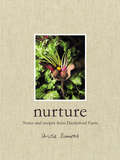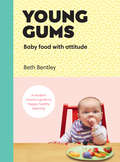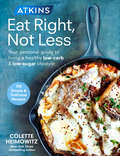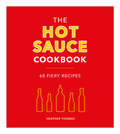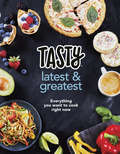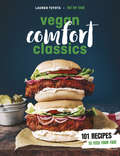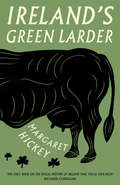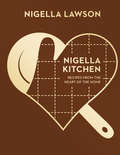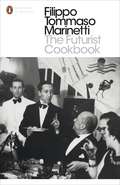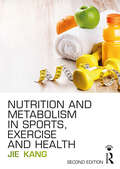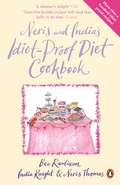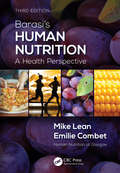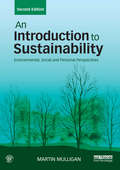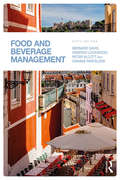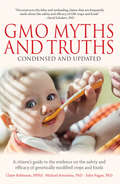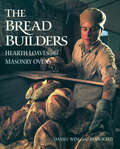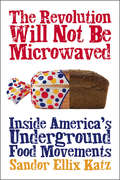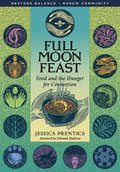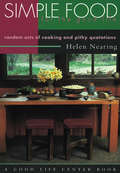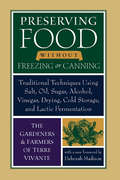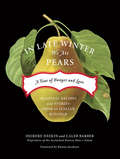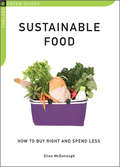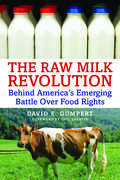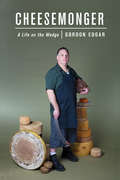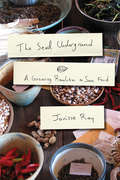- Table View
- List View
Nurture: Notes and Recipes from Daylesford Farm
by Carole BamfordOver 40 years ago, Carole Bamford began a journey towards a more conscious way of life. What began as a desire to make a small difference to the health and future of our planet has grown from a collection of empty barns, bare fields and a small herd of dairy cows, to become Daylesford Organic, one of the most sustainable farms in the UK.Nurture tells the story of how and why it all began and brings to life the principles, ideas and beliefs that have made Daylesford what it is today. From sustainable farming to holistic health, Nurture shares Carole Bamford’s vision for a more mindful way of life and how we can all nourish our bodies, mind and spirit in a simple and balanced way. At the heart of Daylesford is its connection to the land and the book also celebrates the bountiful organic produce it reaps with a selection of seasonal recipes. Packed with flavour and nourishing ingredients, choose from colourful salads and hearty stews, indulgent puddings, meals for special occasions and food for those times when you need an additional boost of nutrients. Nurture is a celebration of the bounty that nature provides, and a reminder that we must all take care of the land we live off, so that future generations can enjoy its riches too.
Young Gums: A Modern Mama’s Guide to Happy, Healthy Weaning
by Beth BentleyOne family, one meal. Super-easy, super-tasty weaning recipes you’ll love to eat yourself.‘a breath of fresh air for new parents’ - Skye Gyngell Award-winning food blogger Beth Bentley makes weaning fun and simple with a combination of baby-led and spoon-fed nutritious, wholesome recipes that are packed full of flavour. Say goodbye to fruit-sweetened, unidentifiable purees and instead make real, delicious food that the whole family can enjoy. Focusing on just a few great ingredients, clever flavour combinations and easy cooking methods, this is food that can be scaled up easily so that the family is able to enjoy the one meal – together; a practice that will help your baby develop good eating and social habits. And even better, the majority can be made using just one hand and just one pan!Including recipes such as Rainbow Ragu, Sweet Potato Cookies, Baby Burrito Bowls and No-roast Chicken Pot Roast, this step-by-step guide will take you from the daunting first stages of weaning right up to one year, with confidence and excitement. Including over 60 meals for both baby and mum, here are healthy, flavoursome recipes for a happy baby.
Atkins: Your personal guide to living a healthy low-carb and low-sugar lifestyle
by Colette HeimowitzThe key to weight loss is not how much you eat, it’s what you eat It’s the go-to diet for celebrities like Kim Kardashian, Jennifer Aniston and Alyssa Milano, it has been dubbed 'the perfect diet for those who love food' by Nigella Lawson and it’s the most famous and effective diet in the world. Atkins is back, and it’s easier and more flexible than ever, with delicious, satisfying recipes such as Portobello Pizza and Apple Crumble. Discovering a healthy, sustainable way of eating that you can live with beats yo-yo dieting which will leave you frustrated and discouraged. Atkins: Eat Right, Not Less offers choices and helps you find the level of carbohydrate consumption you will be able to sustain. By making small adjustments to the foods you already eat, you can ease into a healthier lifestyle while still making a huge impact on your health and weight.Beautifully illustrated and filled with 100 whole food recipes and simple solutions for eating the foods you love in a healthier way, this brand-new Atkins guide focuses on eating right – not less – to achieve weight management goals and improve your overall health. It includes three flexible and effective plans, so you can choose the right approach for you:- The original Atkins 20, for those who need a more structured programme- Atkins 40, a celebrity favourite and one of the Most Googled Diets of 2016- Atkins 100, the most flexible approach and the one that proves small changes can lead to big resultsWith step-by-step directions on each approach, as well as meal plans, shopping lists and 100 simple and delicious recipes, Atkins: Eat Right, Not Less has everything you need to kick-start your new lifestyle.
The Hot Sauce Cookbook
by Heather ThomasAddicted, obsessed, devoted. No meal is safe from a hot sauce addict. They’ve got it everywhere, in their fridge, in their pantry, even in their bag, swag! These 60 recipes are sure to satiate cravings at every mealtime.No longer relegated to the side of the plate, hot sauce is now the star of the show! So, dive into this cookbook for fantastically fiery dishes including Chilli-fried eggs, Hot Sauce Buffalo Wings, Sriracha Buttered Shrimp, Harissa Chicken Shawarma Wraps, Crunchy Thai Salad, and even sweet treats such as Chilli Chocolate Brownies and Mexican Hot Chocolate for die-hard hot sauce addicts.
Tasty: Everything you want to cook right now - The official cookbook from Buzzfeed’s Tasty and Proper Tasty
by TastyTasty, Buzzfeed's popular cooking brand, delivers both comforting and healthy weeknight dinners for meat-lovers, vegetarians, and vegans alike, plus treats like ice cream, chocolate desserts, and rainbow recipes galore. This is the international bestseller and first official cookbook from Tasty and Proper Tasty. Find all your favourite recipes to date, as voted by your likes, comments, shares, smiles and happy bellies, in one brilliant book. Here you’ll find over 80 amazing recipes with staying power, including ...Fried Mac 'n' Cheese Sticks, Chicken Satay Skewers, Barbecue Beer Can Chicken, Honey-Garlic Slow Cooked Ribs, Mexican-style Pork Tacos, Classic Tomato Lasagne, Cheesiest Garlic Bread Ever, Peanut Noodle Pasta Salad, Vegan Mac 'n' Cheese, Falafel, Giant Cinnamon Roll, White Chocolate Chip Truffles, Fudgiest Brownies Ever, Chewiest Chocolate Chip Cookies Ever, Unicorn Cheesecake, Emoji Fries, Fidget Spinner Cookies and Chocolate Galaxy Bark! BOOM!
Vegan Comfort Classics: 101 Recipes to Feed Your Face
by Lauren ToyotaFeed your face with satisfying, delicious food. Vegan Comfort Classics is a collection of 101 mouth-watering recipes that combine innovative plant-based cooking with flavoursome comfort food. YouTube sensation Lauren Toyota of the hit vegan channel, Hot for Food, offers indulgent, crave-worthy dishes such as Courgette-Onion Bhajis, Mac ‘n Cheese Onion Rings, Herb-loaded Sausage Rolls, Spicy Peanut Noodles, Waffle-topped Cottage Pie, Stuffed Crust Pizza, Raspberry Funfetti Pop Tarts, Fudgy Brownies as well as a whole chapter of delicious melty, stacked sandwiches and essential sauces to make any meal awesome. Each and every tempting recipe is photographed. This is modern, tasty food made for weeknights, sharing with friends at the weekend, late-night munchies and beyond.
Ireland’s Green Larder: The story of food and drink in Ireland
by Margaret HickeyIreland’s Green Larder tells the story of food and drink in Ireland, for the first time. From the ancient system of the Céide Fields, established a thousand years before the Pyramids were built, right up to today’s thriving food scene.Rather than focusing on battles and rulers, Margaret Hickey digs down to what has formed the day-to-day life of the people. It’s a glorious ramble through the centuries, drawing on diaries, letters, legal texts, ballads, government records, folklore and more. The story of how Queen Maeve died after being hit by a piece of hard cheese sits alongside a contemporary interview with one of Ireland’s magnificent cheese makers, and the tale of the author’s day in Clew Bay on the wild Atlantic coast, collecting the world’s freshest oysters, is countered by Jonathan Swift’s complaint about dubiously fresh salmon being sold on the streets of Dublin.Beautifully illustrated and dotted with recipes, there are chapters covering everything from strong tea to the Irish rituals and superstitions associated with food and drink. With a light touch and a flair for finding the most telling details, Hickey draws on years of research to bring this sweeping history brilliantly to life.
Nigella Kitchen: Recipes from the Heart of the Home (Nigella Collection)
by Nigella LawsonNigella Collection: a vibrant new look for Nigella’s classic cookery books; previously published as KITCHEN.‘A little pottering in the kitchen gives me that feeling I find so crucial, of being in a fixed, familiar place in a whirling world. So here it is, from my kitchen to yours: cosy, cocooning food.’ The classic family recipe book by Nigella Lawson. Kitchen is packed with feel-good food for cooks and eaters that solves all your everyday cooking quandaries, from what to cook for Sunday lunch or how to give children food they’ll eat, to how to rustle up an impromptu dinner party menu or a gluten-free cake. As well as her mouthwatering recipes, Nigella rounds up her kitchen must-haves: essential kitchen equipment and standby ingredients. With luscious photography, easy family recipes, indulgent food writing and a beautiful hardback design, this is a book you will treasure for many years as well as a delicious gift for friends and family. Part 1: Kitchen Quandaries What’s for tea? – everyday eating made simple for all agesHurry up, I’m hungry! – quick meals and easy suppers for those frantic days Easy does it – dinner party ideas that won’t try your temper Cook it better – waste-saving recipes My sweet solution – problem-solving pudding recipes Off the cuff – quick dinner ideas for feasts from the fridge-freezer and store cupboardPart 2: Kitchen Comforts Chicken and its place in my kitchen – chicken recipes to soothe the soul A dream of hearth and home – comforting weekend baking, from muffins and cupcakes to brownies, scones and cakesAt my table – steak, casserole, lasagne and much more: easy suppers to share with friends The solace of stirring – finding comfort in risotto The bone collection –ham hocks, spare ribs, braised beef and other meaty treats for the die-hard carnivore Kitchen pickings - easy cocktails and party food The cook’s cure for Sunday-night-itis - cosy and substantial supper ideas that require little effort from the cook
The Futurist Cookbook
by Filippo Tommaso Marinetti Suzanne Brill Lesley ChamberlainBoth madcap cookbook and manifesto on Futurism, Marinetti's exuberant and entertaining book has been described as one of 'the best artistic jokes of the century'No other cultural force except the early twentieth-century avant-garde movement Futurism has produced a provocative work about art disguised as an easy-to-read cookbook. Part manifesto, part artistic joke, Fillippo Marinetti's The Futurist Cookbook is a collection of recipes, experiments, declamations and allegorical tales. Here are recipes for ice cream on the moon; candied atmospheric electricities; nocturnal love feasts; sculpted meats. Marinetti also sets out his argument for abolishing pasta as ill-suited to modernity, and advocates a style of cuisine that will increase creativity. Although at times betraying its author's nationalistic sympathies, The Futurist Cookbook is funny, provocative, whimsical, disdainful of sluggish traditions and delighted by the velocity and promise of modernity.Filippo Tommaso Marinetti was born in 1876 to Italian parents and grew up in Alexandria, Egypt, where he was nearly expelled from his Jesuit school for championing scandalous literature. He then studied in Paris and obtained a law degree in Italy before turning to literature. In 1909 he wrote the infamous Futurist Manifesto, which championed violence, speed and war, and proclaimed the unity of art and life. Marinetti's life was fraught with controversy: he fought a duel with a hostile critic, was subject to an obscenity trial, and was a staunch supporter of Italian Fascism. Alongside his literary activities, he was a war correspondent during the Italo-Turkish War and served on the Eastern Front in World War II, despite being in his sixties. He died in 1944.'A paean to sensual freedom, optimism and childlike, amoral innocence ... it has only once been answered, by Aldous Huxley's Brave New World' Lesley Chamberlain
Nutrition and Metabolism in Sports, Exercise and Health
by Jie KangThe second edition of Nutrition and Metabolism in Sports, Exercise and Health offers a clear and comprehensive introduction to sport and exercise nutrition, integrating key nutritional facts, concepts and dietary guidelines with a thorough discussion of the fundamental biological science underpinning physiological and metabolic processes. Informed by the latest research in this fast-moving discipline, the book includes brand-new sections on, amongst others: • Cellular structure for metabolism • Alcohol and metabolism • Uncoupling protein and thermogenesis • Dietary guidelines from around the world • Nutrient timing • Protein synthesis and muscle hypertrophy • Protein supplementation • Ergogenic effects of selected stimulants • Nutritional considerations for special populations • Dehydration and exercise performance Each chapter includes updated pedagogical features, including definitions of key terms, chapter summaries, case studies, review questions and suggested readings. A revised and expanded companion website offers additional teaching and learning features, such as PowerPoint slides, multiple-choice question banks and web links. No book goes further in explaining how nutrients function within our biological system, helping students to develop a better understanding of the underlying mechanisms and offering the best grounding in applying knowledge to practice in both improving athletic performance and preventing disease. As such, Nutrition and Metabolism in Sports, Exercise and Health is essential reading for all students of sport and exercise science, kinesiology, physical therapy, strength and conditioning, nutrition or health sciences.
Neris and India's Idiot-Proof Diet Cookbook
by Bee Rawlinson India Knight Neris ThomasIn Neris and India's Idiot-Proof Diet Cookbook India Knight and Neris Thomas enlist the help of Bee Rawlinson to create over a hundred low-carb recipes to help you get 'from pig to twig'.Low-carb cooking: a lot of meat with a side order of cream, right? Wrong. How about onion bhajias, sesame stir-fried duck and fabulously retro Black Forest Trifle for pudding? (Yes! Pudding!)Neris & India's Idiot-Proof Diet Cookbook is the least diety diet cookbook you've ever seen. Over a hundred quick-and-easy recipes (including some that need just five ingredients) cover every occasion. Each recipe fits perfectly into the Idiot-Proof Diet and will not only inspire and delight you, but - best of all - will make you shrink like you wouldn't believe.'The "Nigella of low-carb" . . . recipes you'll want to gorge on, whether you're following their low-carb plan or not' Scotland on Sunday'A practical and easy to follow collection of idiot-proof recipes that will inspire you to keep on track with your diet. You'll find recipes for breakfasts, snacks, soups, main meals, treats and desserts. Treat yourself' Easyfood'An easy-to-follow low-carb diet that doesn't mean eating meat three times a day' Woman & HomeIndia Knight is the author of four novels: My Life on a Plate, Don't You Want Me, Comfort and Joy and Mutton. Her non-fiction books include The Shops, the bestselling diet book Neris and India's Idiot-Proof Diet, the accompanying bestselling cookbook Neris and India's Idiot-Proof Diet Cookbook and The Thrift Book. India is a columnist for the Sunday Times and lives in London with her three children.Follow India on Twitter @indiaknight or on her blog at http://indiaknight.tumblr.com. Neris Thomas is a film producer and artist, she lives in London and is married with one daughter. Bee Rawlinson is a mother of four from Devon who came to Neris and India's attention through her delicious recipes on the Pig2Twig forum, the Diet's website.
Barasi's Human Nutrition: A Health Perspective, Third Edition
by Michael EJ Lean Emilie CombetBarasi's Human Nutrition: A Health Perspective, Third Edition, provides a comprehensive introduction to the principles and practice of nutrition. Thoroughly revised, restructured, and updated, this new edition presents up-to-date scientific information in an accessible and reader-friendly format, emphasising how important nutrition is for evidence across the full translational health spectrum, from epidemiology and basic sciences through clinical and public heath applications, and ultimately into sustainable public policy. This third edition places more emphasis on applied nutrition than previous editions. Specifically, sections relating to clinical nutrition, public health nutrition, and improving foods for better health are now separate chapters with new chapters on sport nutrition, obesity, and weight management, and each section has a dedicated table of contents to better highlight the subject covered. The book also focuses on nutritional issues related to globally important, potentially preventable, major diseases, such as coronary heart disease, cancer, and diabetes, and discusses methods for studying nutrition and relevant essential dietary principles for intervention. This textbook is written from the perspective of experienced teachers at the undergraduate and graduate levels and is an invaluable resource for students in health and nutrition and for those pursuing further qualifications in food science. While containing substantial detail on some interesting topics, this book is written in an ‘easy-read’ style, which makes potentially complicated subjects accessible to general readers as well as to the more specialised user. It provides both an entry-level introduction to human nutrition for introductory or intermediate undergraduate students and also sufficient comprehensive detail to serve as a reference book for Masters or PhD students.
An Introduction to Sustainability: Environmental, Social and Personal Perspectives
by Martin MulliganAn Introduction to Sustainability provides students with a comprehensive overview of the key concepts and ideas which are encompassed within the growing field of sustainability. The fully updated second edition, including new figures and images, teases out the diverse but intersecting domains of sustainability and emphasises strategies for action. Aimed at those studying the subject for the first time, it is unique in giving students from different disciplinary backgrounds a coherent framework and set of core principles for applying broad sustainability principles within their own personal and professional lives. These include: working to improve equality within and across generations; moving from consumerism to quality of life goals; and respecting diversity in both nature and culture. Areas of emerging importance such as the economics of prosperity and wellbeing stand alongside core topics including: · Energy and society · Consumption and consumerism · Risk and resilience · Waste, water and land. Key challenges and applications are explored through international case studies, and each chapter includes a thematic essay drawing on diverse literature to provide an integrated introduction to fundamental issues. Housed on the Routledge Sustainability Hub, the book’s companion website contains a range of features to engage students with the interdisciplinary nature of sustainability. Together these resources provide a wealth of material for learning, teaching and researching the topic of sustainability. This textbook is an essential companion to any sustainability course.
Food and Beverage Management
by Bernard Davis Andrew Lockwood Peter Alcott Ioannis S. PantelidisThis introductory textbook provides a thorough guide to the management of food and beverage outlets, from their day-to-day running through to the wider concerns of the hospitality industry. It explores the broad range of subject areas that encompass the food and beverage market and its main sectors – fast food and casual dining, hotels and quality restaurants and event, industrial and welfare catering. It also looks at some of the important trends affecting the food and beverage industry, covering consumers, the environment and ethical concerns as well as developments in technology. New to this edition: New chapter: Classifying food and drink service operations. New international case studies throughout covering the latest industry developments within a wide range of businesses. Enhanced coverage of financial aspects, including forecasting and menu pricing with respective examples of costings. New coverage of contemporary trends, including events management, use of technology, use of social media in marketing, customer management and environmental concerns, such as sourcing, sustainability and waste management. Updated companion website, including new case studies, PowerPoint slides, multiple choice questions, revision notes, true or false questions, short answer questions and new video and web links per chapter. It is illustrated in full colour and contains in-chapter activities as well as end-of-chapter summaries and revision questions to test the readers' knowledge as they progress. Written by a team of authors with many years of industry practice and teaching experience, this book is the ideal guide to the subject for hospitality students and industry practitioners alike.
GMO Myths and Truths: A Citizen’s Guide to the Evidence on the Safety and Efficacy of Genetically Modified Crops and Foods (3rd Edition)
by Claire Robinson John Fagan Michael AntoniouIt is often claimed that the case against genetically modified (GM) crops and foods is based on emotion, not science, and that to oppose GM crop and food technology is to be anti-science. It is also claimed that GM crops offer higher yields and better nutrition, that they are safe for health and the environment, that they reduce agrochemical use, and that they are needed to feed the world’s growing population. This book, co-authored by two genetic engineers and a writer/researcher, exposes these claims as false, using scientific and other documented evidence. GMO Myths and Truths summarizes the facts on the safety and efficacy of genetically modified (GM) crops and foods in terms that are accessible to the non-scientist but still relevant to scientists, policymakers and educators. The evidence presented points to many hazards, risks, and limitations of genetic engineering technology. These include harms found in animal feeding and ecological studies, which in turn indicate risks to health and the environment posed by GM crops and foods. The layout of the book enables those readers with limited time to read the chapter summaries, while providing more detail and full references for those who require them. At 164 pages of paperback size, this new condensed version is shorter and more accessible than the authors’ 330-page report by the same name, which has been downloaded over half a million times. The book shows that conventional breeding continues to outstrip GM in developing crops that deliver high yields, better nutrition, and tolerance to extreme weather conditions and poor soils. In agreement with over 400 international experts who co-authored a UN and World Bank-sponsored report on the future of farming, the authors conclude that modern agroecology, rather than GM, is the best path for feeding the world’s current and future populations in a safe and sustainable way.
The Bread Builders: Hearth Loaves and Masonry Ovens (Polyface Titles Ser.)
by Daniel Wing Alan ScottCreating the perfect loaf of bread--a challenge that has captivated bakers for centuries--is now the rage in the hippest places, from Waitsfield, Vermont, to Point Reyes Station, California. Like the new generation of beer drinkers who consciously seek out distinctive craft-brewed beers, many people find that their palates have been reawakened and re-educated by the taste of locally baked, whole-grain breads. Today's village bakers are finding an important new role--linking tradition with a sophisticated new understanding of natural levens, baking science and oven construction. Daniel Wing, a lover of all things artisinal, had long enjoyed baking his own sourdough bread. His quest for the perfect loaf began with serious study of the history and chemistry of bread baking, and eventually led to an apprenticeship with Alan Scott, the most influential builder of masonry ovens in America. Alan and Daniel have teamed up to write this thoughtful, entertaining, and authoritative book that shows you how to bake superb healthful bread and build your own masonry oven. The authors profile more than a dozen small-scale bakers around the U.S. whose practices embody the holistic principles of community-oriented baking based on whole grains and natural leavens. The Bread Builders will appeal to a broad range of readers, including: Connoisseurs of good bread and good food. Home bakers interested in taking their bread and pizza to the next level of excellence. Passionate bakers who fantasize about making a living by starting their own small bakery. Do-it-yourselfers looking for the next small construction project. Small-scale commercial bakers seeking inspiration, the most up-to-date knowledge about the entire bread-baking process, and a marketing edge.
The Revolution Will Not Be Microwaved: Inside America's Underground Food Movements
by Sandor Ellix KatzAn instant classic for a new generation of monkey-wrenching food activists. Food in America is cheap and abundant, yet the vast majority of it is diminished in terms of flavor and nutrition, anonymous and mysterious after being shipped thousands of miles and passing through inscrutable supply chains, and controlled by multinational corporations. In our system of globalized food commodities, convenience replaces quality and a connection to the source of our food. Most of us know almost nothing about how our food is grown or produced, where it comes from, and what health value it really has. It is food as pure corporate commodity. We all deserve much better than that. In The Revolution Will Not Be Microwaved, author Sandor Ellix Katz (Wild Fermentation, Chelsea Green 2003) profiles grassroots activists who are taking on Big Food, creating meaningful alternatives, and challenging the way many Americans think about food. From community-supported local farmers, community gardeners, and seed saving activists, to underground distribution networks of contraband foods and food resources rescued from the waste stream, this book shows how ordinary people can resist the dominant system, revive community-based food production, and take direct responsibility for their own health and nutrition.
Full Moon Feast: Food and the Hunger for Connection
by Jessica Prentice Deborah MadisonFull Moon Feast invites us to a table brimming with locally grown foods, radical wisdom, and communal nourishment. In Full Moon Feast, accomplished chef and passionate food activist Jessica Prentice champions locally grown, humanely raised, nutrient-rich foods and traditional cooking methods. The book follows the thirteen lunar cycles of an agrarian year, from the midwinter Hunger Moon and the springtime sweetness of the Sap Moon to the bounty of the Moon When Salmon Return to Earth in autumn. Each chapter includes recipes that display the richly satisfying flavors of foods tied to the ancient rhythm of the seasons. Prentice decries our modern food culture: megafarms and factories, the chemically processed ghosts of real foods in our diets, and the suffering--physical, emotional, cultural, communal, and spiritual--born of a disconnect from our food sources. She laments the system that is poisoning our bodies and our communities. But Full Moon Feast is a celebration, not a dirge. Prentice has emerged from her own early struggles with food to offer health, nourishment, and fulfillment to her readers. She recounts her relationships with local farmers alongside ancient harvest legends and methods of food preparation from indigenous cultures around the world. Combining the radical nutrition of Sally Fallon's Nourishing Traditions, keen agri-political acumen, and a spiritual sensibility that draws from indigenous as well as Western traditions, Full Moon Feast is a call to reconnect to our food, our land, and each other.
Simple Food for the Good Life: Random Acts of Cooking and Pithy Quotations (Good Life Series)
by Helen NearingFifty years before the phrase "simple living" became fashionable, Helen and Scott Nearing were living their celebrated "Good Life" on homesteads first in Vermont, then in Maine. All the way to their ninth decades, the Nearings grew their own food, built their own buildings, and fought an eloquent combat against the silliness of America's infatuation with consumer goods and refined foods. They also wrote or co-wrote more than thirty books, many of which are now being brought back into print by the Good Life Center and Chelsea Green. Simple Food for the Good Life is a jovial collection of "quips, quotes, and one-of-a-kind recipes meant to amuse and intrigue all of those who find themselves in the kitchen, willingly or otherwise." Recipes such as Horse Chow, Scott's Emulsion, Crusty Carrot Croakers, Raw Beet Borscht, Creamy Blueberry Soup, and Super Salad for a Crowd should improve the mood as well as whet the appetite of any guest. Here is an antidote for the whole foods enthusiast who is "fed up" with the anxieties and drudgeries of preparing fancy meals with stylish, expensive, hard-to-find ingredients. This celebration of salads, leftovers, raw foods, and homegrown fruits and vegetables takes the straightest imaginable route from their stem or vine to your table. "The funniest, crankiest, most ambivalent cookbook you'll ever read," said Food & Wine magazine. "This is more than a mere cookbook," said Health Science magazine: "It belongs to the category of classics, destined to be remembered through the ages." Among Helen Nearing's numerous books is Chelsea Green's Loving and Leaving the Good Life, a memoir of her fifty-year marriage to Scott Nearing and the story of Scott's deliberate death at the age of one hundred. Helen and Scott Nearing's final homestead in Harborside, Maine, has been established in perpetuity as an educational progam under the name of The Good Life Center.
Preserving Food without Freezing or Canning: Traditional Techniques Using Salt, Oil, Sugar, Alcohol, Vinegar, Drying, Cold Storage, and Lactic Fermentation
by Deborah Madison Eliot Coleman The Gardeners and Farmers of Centre Terre VivanteTypical books about preserving garden produce nearly always assume that modern "kitchen gardeners" will boil or freeze their vegetables and fruits. Yet here is a book that goes back to the future—celebrating traditional but little-known French techniques for storing and preserving edibles in ways that maximize flavor and nutrition. Translated into English, and with a new foreword by Deborah Madison, this book deliberately ignores freezing and high-temperature canning in favor of methods that are superior because they are less costly and more energy-efficient. As Eliot Coleman says in his foreword to the first edition, "Food preservation techniques can be divided into two categories: the modern scientific methods that remove the life from food, and the natural 'poetic' methods that maintain or enhance the life in food. The poetic techniques produce... foods that have been celebrated for centuries and are considered gourmet delights today." Preserving Food Without Freezing or Canning offers more than 250 easy and enjoyable recipes featuring locally grown and minimally refined ingredients. It is an essential guide for those who seek healthy food for a healthy world.
In Late Winter We Ate Pears: A Year of Hunger and Love
by Deirdre Heekin Caleb Barber Rowan JacobsenMore than a cookbook, In Late Winter We Ate Pears is a love affair with a culture and a way of life. In vignettes taken from their year in Italy, husband and wife Caleb Barber and Deirdre Heekin offer glimpses of a young, vibrant Italy: of rolling out pizza dough in an ancient hilltown at midnight while wild dogs bay in the abandoned streets; of the fogged car windows of an ancient lovers' lane amid the olive groves outside Prato. The recipes in In Late Winter We Ate Pears are every bit as delicious as the memories. Selections such as red snapper with fennel sauce, fresh figs with balsamic vinegar and mint, and frangipane and plum tart capture the essence of Italy. Following the tradition of Italian cuisine, the 80 recipes are laid out according to season, to suggest taking advantage of your freshest local ingredients. Whether you are an experienced cook looking for authentic Italian recipes or a beginner wanting to immerse yourself in the romance of a young couple's culinary adventure, In Late Winter We Ate Pears provides rich sustenance in the best tradition of travel and food writing. Cheers to Chef Barber and writer Deirdre Heekin for sharing these marvelous recipes from Osteria Pane e Salute (Pane translates as bread and Salute as health) and for sharing the story of a most inspired year spent in Italy. In Late Winter We Ate Pears is a testament that bread and health are the things that make a good life.
Sustainable Food: How to Buy Right and Spend Less (Chelsea Green Guides)
by Elise McDonoughWondering whether it’s worth it to splurge on the locally raised beef? What about those organic carrots? New in the Chelsea Green Guides series, Sustainable Food: How to Buy Right and Spend Less helps the average shopper navigate the choices, whether strolling the aisles of a modern supermarket or foraging at a local farmers market. This down-to-earth, casual guide—small enough to be slipped into your pocket—answers these and other questions for the shopper: What are the differences among organic, local, fair-trade, free-range, naturally raised, and biodynamic foods? How affordable is it to subscribe to a CSA farm—and what are the advantages? Is it better to choose wild Alaskan salmon at $18.99, or the Chilean farmed fish at $11.99? What cooking oils can be sustainably sourced? How can a food co-op increase access to, and affordability of, healthier, Earth-friendly foods? Where can you find sustainably produced sugar, and are there any local replacements for sweeteners from faraway lands? What do the distinctions between shade-grown and trellised coffee mean? Is shark okay to eat? How about mackerel? Why is the war on plastic bags so important? Sustainable eating just got easier.
The Raw Milk Revolution: Behind America's Emerging Battle over Food Rights
by David E. Gumpert Joel SalatinBeginning in 2006, the agriculture departments of several large states-with backing from the U.S. Food and Drug Administration-launched a major crackdown on small dairies producing raw milk. Replete with undercover agents, sting operations, surprise raids, questionable test-lab results, mysterious illnesses, propaganda blitzes, and grand jury investigations, the crackdown was designed to disrupt the supply of unpasteurized milk to growing legions of consumers demanding healthier and more flavorful food. The Raw Milk Revolution takes readers behind the scenes of the government's tough and occasionally brutal intimidation tactics, as seen through the eyes of milk producers, government regulators, scientists, prosecutors, and consumers. It is a disturbing story involving marginally legal police tactics and investigation techniques, with young children used as political pawns in a highly charged atmosphere of fear and retribution. Are regulators' claims that raw milk poses a public health threat legitimate? That turns out to be a matter of considerable debate. In assessing the threat, The Raw Milk Revolution reveals that the government's campaign, ostensibly designed to protect consumers from pathogens like salmonella, E. coli 0157:H7, and listeria, was based in a number of cases on suspect laboratory findings and illnesses attributed to raw milk that could well have had other causes, including, in some cases, pasteurized milk. David Gumpert dares to ask whether regulators have the public's interest in mind or the economic interests of dairy conglomerates. He assesses how the government's anti-raw-milk campaign fits into a troublesome pattern of expanding government efforts to sanitize the food supply-even in the face of ever-increasing rates of chronic disease like asthma, diabetes, and allergies. The Raw Milk Revolution provides an unsettling view of the future, in which nutritionally dense foods may be available largely through underground channels.
Cheesemonger: A Life on the Wedge
by Gordon EdgarWitty and irreverent, informative and provocative, Cheesemonger: A Life on the Wedge is the highly readable story of Gordon Edgar's unlikely career as a cheesemonger at San Francisco's worker-owned Rainbow Grocery Cooperative. A former punk-rock political activist, Edgar bluffed his way into his cheese job knowing almost nothing, but quickly discovered a whole world of amazing artisan cheeses. There he developed a deep understanding and respect for the styles, producers, animals, and techniques that go into making great cheese. With a refreshingly unpretentious sensibility, Edgar intertwines his own life story with his ongoing love affair with cheese, and offers readers an unflinching, highly entertaining on-the-ground look at America's growing cheese movement. From problem customers to animal rights, business ethics to taste epiphanies, this book offers something for everyone, including cheese profiles and recommendations for selecting the very best-not just the most expensive-cheeses from the United States and around the world and a look at the struggles dairy farmers face in their attempts to stay on and make their living from the land. Edgar-a smart, progressive cheese man with an activist's edge-enlightens and delights with his view of the world from behind the cheese counter and his appreciation for the skill and tradition that go into a good wedge of Morbier. Cheesemonger is the first book of its kind-a cheese memoir with attitude and information that will appeal to everyone from serious foodies to urban food activists.
The Seed Underground: A Growing Revolution to Save Food
by Janisse RayThere is no despair in a seed. There's only life, waiting for the right conditions-sun and water, warmth and soil-to be set free. Everyday, millions upon millions of seeds lift their two green wings. At no time in our history have Americans been more obsessed with food. Options- including those for local, sustainable, and organic food-seem limitless. And yet, our food supply is profoundly at risk. Farmers and gardeners a century ago had five times the possibilities of what to plant than farmers and gardeners do today; we are losing untold numbers of plant varieties to genetically modified industrial monocultures. In her latest work of literary nonfiction, award-winning author and activist Janisse Ray argues that if we are to secure the future of food, we first must understand where it all begins: the seed. The Seed Underground is a journey to the frontier of seed-saving. It is driven by stories, both the author's own and those from people who are waging a lush and quiet revolution in thousands of gardens across America to preserve our traditional cornucopia of food by simply growing old varieties and eating them. The Seed Underground pays tribute to time-honored and threatened varieties, deconstructs the politics and genetics of seeds, and reveals the astonishing characters who grow, study, and save them.
